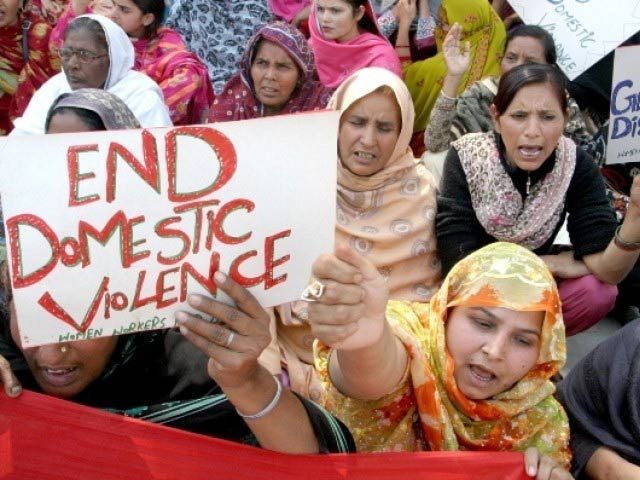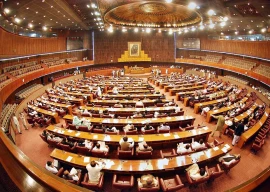
The report compiled jointly by the Punjab Commission on the Status of Women and the Urban Unit is set to be launched on Monday (today). The event will also feature the launch of a cyber-based Gender Management Information System that will provide data on 300 indicators affecting the status of women in society.
Speaking to The Express Tribune, Fauzia Viqar, Punjab Commission on the Status of Women chairperson, said that the report would help improve government policies in view of empirical evidence.
She said data used for the report had been collected from government sources. “The government cannot ignore the findings as these are based on its own data,” she said.
Violence against women
The report states 5, 391 cases of violence against women had been reported in the province in 2012. The number of cases reported in 2015 were 6, 505. It says that in 2015, 173 women were killed in honour-based crimes.
Viqar said the number of reported cases of violence against women was relatively higher in districts with 50 per cent or lower literacy rate. Rahimyar Khan, Sargodha, Multan and Vehari were among these districts. She said the report found an overall decline in the number of convictions in cases of violence against women. There were 81 convictions in 2015, compared to 378 in 2012.
Public health
In health sector, the report notes a gradual increase in budgetary allocations over the 2012-2015 from 10 percent to 15 percent.
However, it says that the condition of public health infrastructure had deteriorated in southern districts. It notes a direct correlation between literacy rate in a district and the utilisation of healthcare facilities by women.
Education
In education, a gender parity index (developed in the compilation of the report) recorded the ratio of literate women to literate men at 0.724.
The report notes that adult literacy in the province is at 69 per cent for men and at 50 per cent for women. It says the ratio of literate men to literate women is better in northern districts than southern districts.
The ratio is lowest in Rajanpur, Jhang, Chiniot, Khushab and Dera Ghazi Khan districts.
Economic vulnerability
The report highlights that 34.5 per cent of women in the province can be considered ‘regularly employed with a fixed wage’ and 50 per cent ‘paid by piece rate’. The corresponding statistics for men are 45.7 per cent and 25.5 per cent, respectively.
It states that 46 per cent of women in the labour force receive remuneration falling in the lowest wage bracket (up to Rs5,000). For men, the corresponding statistic is just 7.7 per cent.
Governance
In governance, the number of women who contested general elections in 2013 was significantly more than those who contested in 2008. The report notes a 129 per cent and a 200 per cent increase in the number of women who contested elections (from 2008 to 2013) for the National Assembly and the provincial assembly, respectively. On the local government elections held in 2015, the report says that election of women on the reserved seats will enable a critical mass to take up leadership roles at the grassroots level.
Access to justice
Of the 1,830 judges in the lower judiciary, only 266 are women. The ratio is poorer in the Lahore High Court. There are only three women judges on the bench.
Police service
Lahore, Faisalabad and Rawalpindi are the three districts that have a woman police station each. There are help desks catering only to women in 660 police stations in the province.
Other bodies
The report says that governing bodies of statutory entities fail to reflect gender parity as representation of women on their boards of directors was only seven per cent.
It says a similar trend is visible in the membership of press clubs.
Published in The Express Tribune, March 7th, 2016.




1716998435-0/Ryan-Reynolds-Hugh-Jackman-(3)1716998435-0-165x106.webp)










1730706072-0/Copy-of-Untitled-(2)1730706072-0-270x192.webp)
COMMENTS
Comments are moderated and generally will be posted if they are on-topic and not abusive.
For more information, please see our Comments FAQ